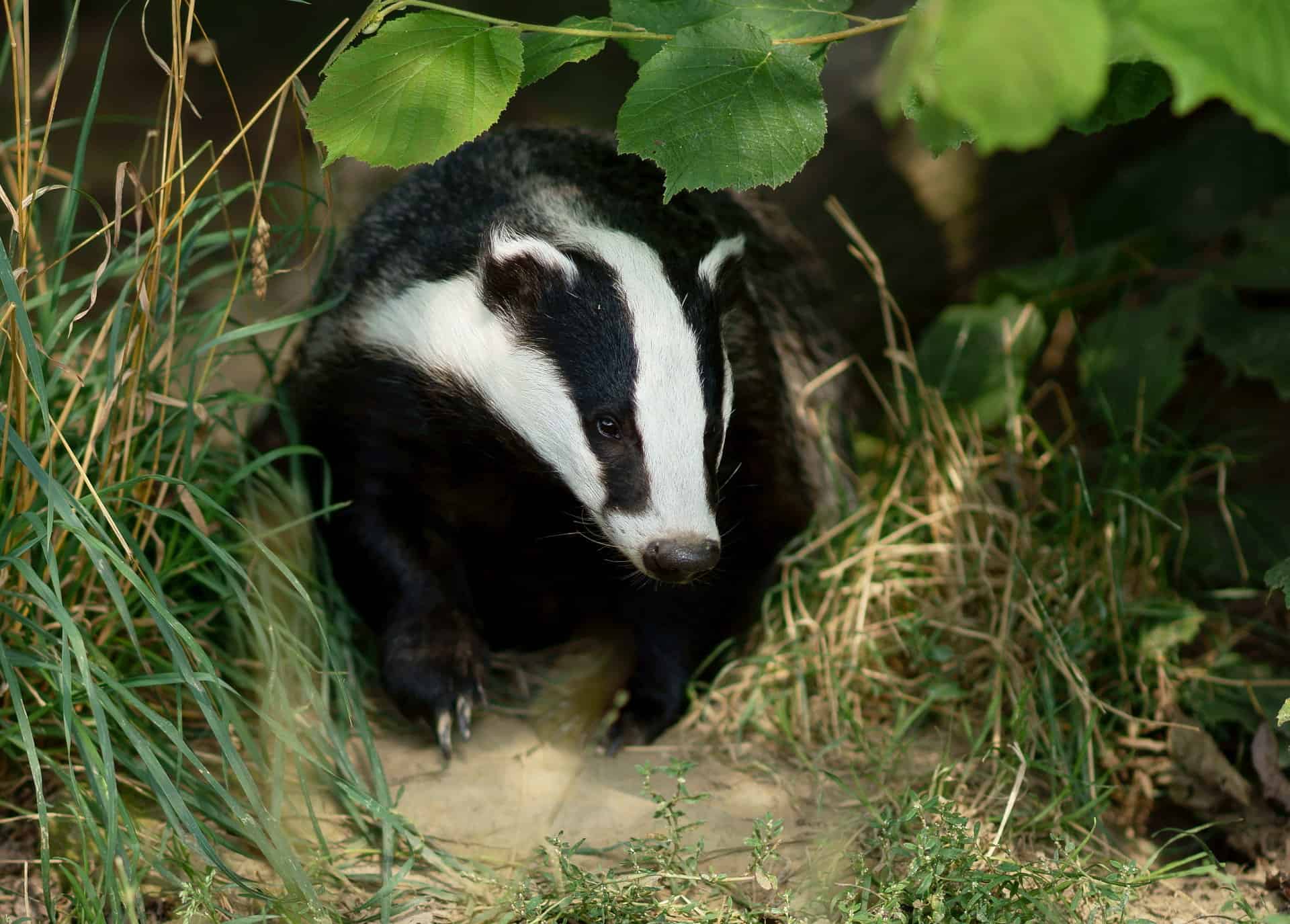
Badgers: surveys and mitigation for development projects
Standing advice for local planning authorities who need to assess the impacts of development on badgers.
Survey reports and mitigation plans are required for development projects that could affect protected species, as part of getting planning permission or a development licence. Surveys need to show whether protected species are present in the area or nearby, and how they use the site. Mitigation plans show how you’ll reduce or compensate for any negative effects to protected species.
This is Natural England’s species standing advice for local planning authorities who need to assess planning applications that affect badgers. This information can be used to decide what is needed for surveys and when assessing mitigation measures for badgers.
Ecologists need to decide which survey and mitigation methods are right for the project they’re working on. If this standing advice isn’t followed, they’ll have to include a statement with the planning application explaining why.
Where this guide says ‘you’ it means the ecologist.
Get more detail on:
- badger licences
- construction near protected wildlife (for developers)
- how planning authorities can assess applications involving protected wildlife
Decide if you need to survey
Survey for badgers if:
- there are signs of setts or badgers in the development site or nearby
- historical or distribution records show that badgers are active in the area or there is suitable habitat for sett building
What a sett is
A sett is any structure or place which shows signs indicating it’s currently being used by a badger. This means that the tunnels and chambers and the areas immediately outside the entrances are all part of the sett. Other structures used by badgers for shelter and refuge could also be classed as a sett, including spaces:
- among rocks and boulders
- under garden sheds and raised buildings
- among hay bales
- under hedges or bushes
Survey methods
You can survey at any time of year. The best time is in early spring or late autumn when badgers are active but there’s less vegetation to hide the signs.
When you find evidence of a sett you must decide whether there are signs that it’s currently in use. The sett is protected if there are signs of badgers, even if they aren’t occupying it at the time.
Look for:
- sett entrances, eg entrances that are normally 25 to 35cm in diameter and shaped like a ‘D’ on its side
- large spoil heaps outside sett entrances
- bedding outside sett entrances
- badger footprints
- badger paths
- latrines
- badger hairs on fences or bushes
- scratching posts
- signs of digging for food
These signs could remain for several weeks after the last occupation by a badger.
Bait marking
You should carry out a bait marking survey to find out:
- the territorial boundaries of different badger groups in an area affected by a development project
- if there are alternative setts used by the same badger group nearby which badgers could move to if a sett is destroyed
- the best site for a replacement artificial sett, if needed
To bait mark you should:
- place small coloured beads in a food bait that will be eaten by badgers, eg peanuts and syrup, at the entrance of each sett (buy the beads from a wildlife equipment supplier to make sure they are the correct composition and size)
- use different coloured beads for each sett
- check dung pits or latrines in the area and record the colour of any beads you find
- plot the locations and colours of beads you find on a map of the area – a boundary line drawn around the outermost points for the same coloured beads indicates a particular badger group’s territory
Survey effort required
Monitor sett entrances over an extended period of time, eg up to 4 weeks, to see if they’re active. You can use various ways to monitor the entrances, including:
- footprint traps, ie placing sand or soil on the entrance floor
- inserting small sticks firmly into the sett entrance so that they won’t fall down unless pushed by a badger or other animal – you can attach sticky tape to the sticks to catch the hairs of animals moving through the entrance
- camera traps
Extra surveys must be done if there are active setts or foraging grounds. Use these surveys to:
- prove that a sett is in current use
- monitor use of the sett and determine if it’s a significant sett for the group
- estimate territorial boundaries
- identify locations for mitigation measures
Assess the impacts
As part of your licence application, provide an assessment of the impacts this development will have on badgers if no mitigation measures were planned. Impacts you should consider include:
- damage to setts
- loss of setts
- loss of foraging areas
- disturbing badgers while they’re occupying setts with noise, lights, vibration, fires or chemicals
Mitigation and compensation methods
Address the potential impacts on badgers with your mitigation and compensation plans using the following approach:
- Aim to avoid negative effects.
- Use mitigation measures to reduce the impacts.
- Use compensation measures to offset any remaining negative impacts for badgers.
Avoid affecting badgers
Your plans should first attempt to avoid affecting badgers, for example by:
- keeping heavy machinery and excavation work away from setts
- deciding appropriate working distances for activities that might either damage the sett or disturb badgers in the sett
- not using fire or chemicals within 20 metres of a sett entrance
- felling trees so they fall away from active sett entrances
- clearing felled trees away from badger paths and sett entrances
- avoiding loud noises and vibrations near active setts, over and above what the badgers would be used to
Mitigation measures
Mitigation measures can include:
- maintaining foraging and watering areas, or creating new areas if needed
- maintaining habitat connectivity, for example with tunnels or underpasses
- excluding badgers from an area temporarily using badger fencing, provided you don’t exclude access to setts
- creating badger crossings for roads
You can’t translocate badgers for a development project. You’re breaking the law if you intentionally capture, kill or injure a badger and you could be prosecuted and fined.
Compensation measures
Compensation measures can include replacing setts that will be destroyed, and improving or creating new habitat.
Excluding badgers from setts
Before setts are destroyed, you must be certain that all badgers have been excluded. This work must be done under licence. Licences to exclude badgers and to close down or destroy a sett are only issued between 1 July and 30 November, other than in exceptional circumstances.
If you need to exclude badgers from a sett:
- make sure there are alternative setts nearby that badgers can relocate to (bait marking should help identify if these setts are used by the same badger group)
- if required, build artificial setts as early as possible and before excluding badgers from the original sett – ensure that badgers have found artificial setts before excluding them from original setts
- use kept in place for at least 21 days from the last sign of badgers accessing the sett – gates must be checked at least once every 3 days for signs of badgers entering or leaving the sett
- don’t use chemical repellents (as none are approved)
Once badgers have been excluded, you should:
- destroy the sett (if appropriate) as soon as possible to reduce the chances of badgers re-occupying
- ensure the sett is securely proofed against re-entry by badgers by using heavy-gauge chainlink or weldmesh.
For more information, please see: https://www.gov.uk/guidance/badgers-surveys-and-mitigation-for-development-projects
Image credit: Peter G Trimming / Flickr

 Join over 2,000 UK Ecologists
Join over 2,000 UK Ecologists